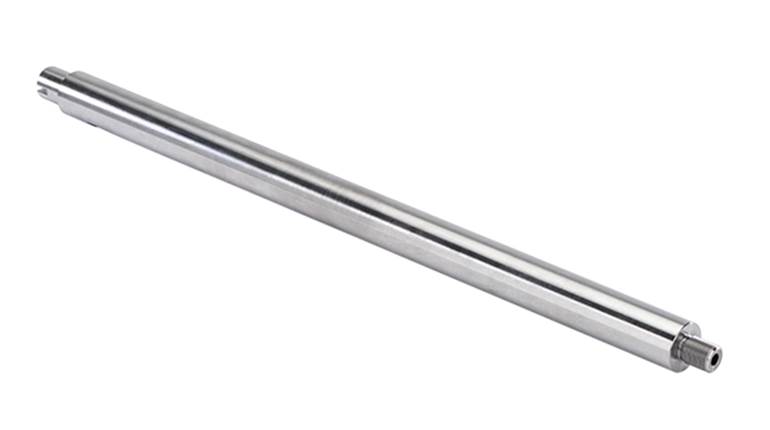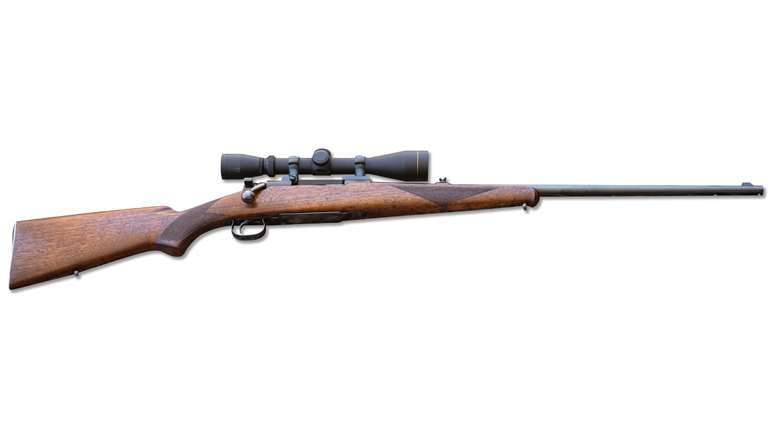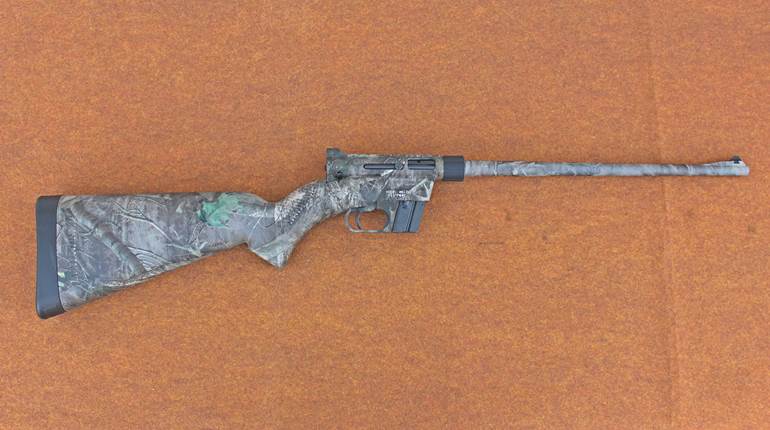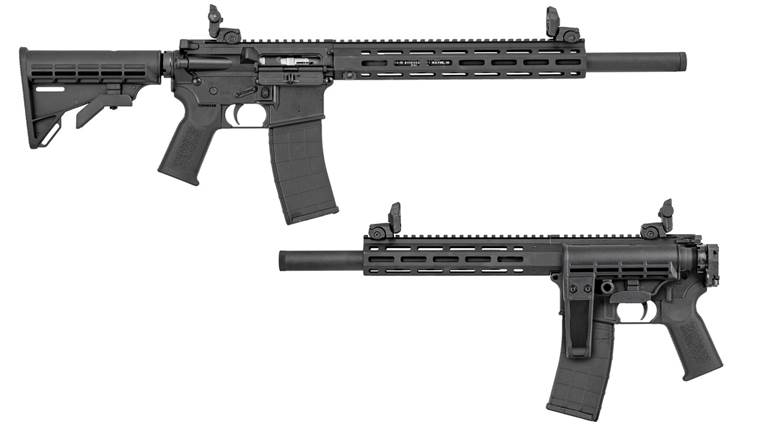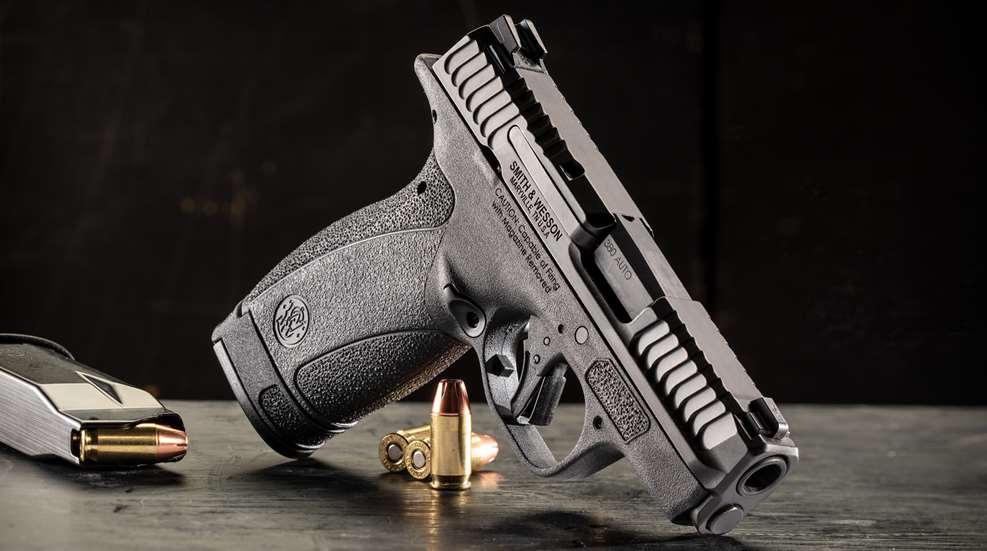
Smith & Wesson introduced the “Bodyguard” moniker in 1955 with the production of a shrouded-hammer version of its popular J-frame revolver. While variants of this handgun are still in production, in 2010, the company applied the Bodyguard name to two new-from-the-ground-up designs: a polymer-frame revolver and a subcompact, polymer-frame, locked-breech, .380 ACP semi-automatic. It is the latter that S&W has recently updated with its Bodyguard 2.0., a .380 pistol that offers “big-gun” features in a small package.
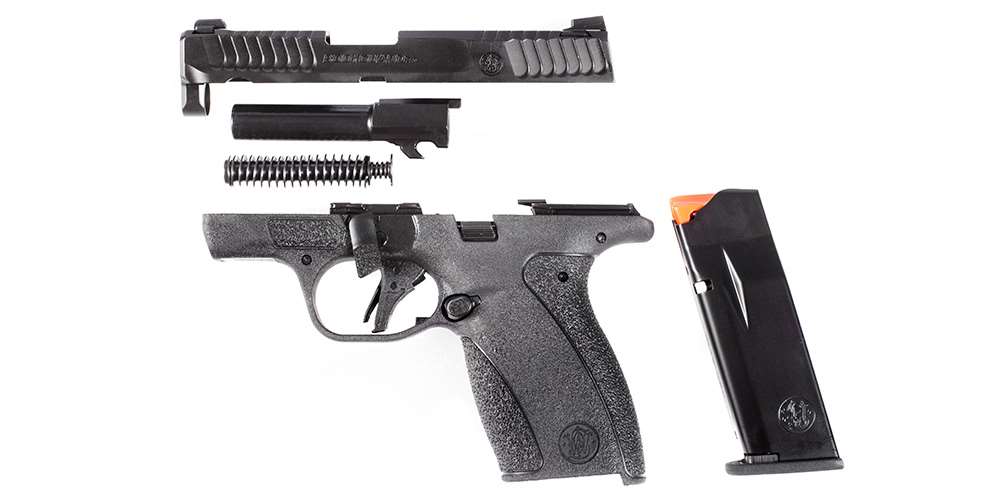
Unlike the original Bodyguard 380, with its internal-hammer-fired, double-action-only mechanism, the Bodyguard 2.0 is striker-fired and mimics the external profile and 18-degree grip angle of S&W’s Shield-series handguns. Think of the Bodyguard 2.0 as a 90-percent-scale Shield Plus, with an overall length of 5.5", a 2.75" barrel and a height of 4.0". The only place where this comparison doesn’t hold true is weight, with the Bodyguard 2.0 weighing about half of what the Shield Plus does at just over 11 ozs. with an unloaded magazine inserted. With the 10-round magazine fully loaded, the pistol still tips the scales at less than a pound.
Another place where the 2.0 is an upgrade over the Bodyguard 380 is in magazine capacity. Its 10-round, flush-fitting, detachable-box magazine transitions from double-stacked into a single column for consistent loading. An extended magazine adds 0.39" in overall height when inserted and holds two additional rounds, doubling the original Bodyguard 380’s six-round capacity. The pistol comes supplied with one of each magazine. Despite the additional capacity, the Bodyguard 2.0 is only slightly wider than its predecessor, measuring 0.88" at the widest point in the grip.

The Bodyguard 2.0 is available both with (TS) and without (NTS) bilateral external manual safety levers. These are in addition to its trigger safety and internal striker safety. Versions equipped with manual safeties can have their slides operated with the safeties engaged. The slide release is left-side-only (the slide locks open on an empty magazine), but the magazine-release button is reversible for right- or left-hand use.
While advances in ammunition during the past decade have made the .380 ACP cartridge a more viable self-defense cartridge, ultra-compact handguns can be picky as to what they will reliably feed. The Bodyguard 2.0 performed flawlessly during testing, with both full-metal-jacket and hollow-point bullets in a variety of weights. Accuracy at the prescribed 7-yard range for subcompact handguns averaged just more than 1.25", made easier by the Bodyguard 2.0’s excellent-for-its-class sights, consisting of an orange dot with a tritium insert on the front post and a rear U-notch with a serrated face. Both sights are mounted in dovetails, which make them drift-adjustable for windage (although our test pistol shot to its point of aim right out of the box) or open to replacement with aftermarket options.
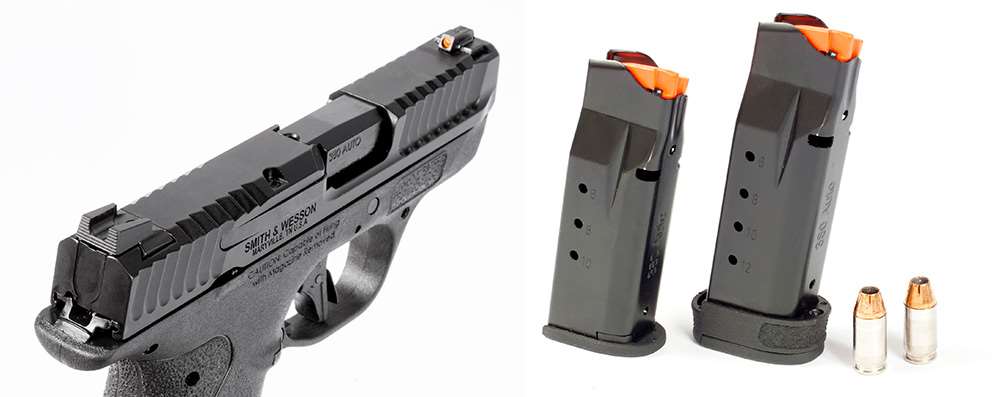
The pistol’s trigger also contributed to its shootability. Unlike other double-action-only entrants in the subcompact .380 category, including its predecessor, the Bodyguard 2.0’s striker-fired mechanism with Performance Center-style flat-faced trigger yields a short and crisp pull (after the initial take-up that disables the trigger safety) that breaks at just more than 5 lbs., followed by a positive reset. The only drawback of this system is that the Bodyguard 2.0 requires more force to operate its slide than a hammer-fired design. M&P-type front and rear slide serrations give additional purchase for manipulating the action, and the magazine-release button is easy to reach without shifting your grip and allows magazines to drop free. Magazines, especially the 12-round version, were difficult to load to full capacity without a tool, especially when brand-new.
Despite the fact that the .380 ACP produces considerably less recoil than a 9 mm Luger, recoil management can still be an issue when the cartridge is packaged into an ultra-small handgun. The Bodyguard 2.0’s low slide-height, M&P-style grip angle and texturing, and undercut trigger guard help mitigate this—and the frame’s generous beavertail prevents slide bite when used with a high grip.
An external takedown lever allows the Bodyguard 2.0 to be disassembled in the manner of the M&P Shield, which does not require pulling the trigger. The only issue encountered during maintenance was that the end of the flat recoil spring tended to jump onto the head of the guide rod while it was removed, making it hard to re-insert the spring into the slide assembly.
With an MSRP of $449, Smith & Wesson’s new Bodyguard 2.0 is competitively priced with other double-column-magazine, striker-fired .380s on the market. It offers the big-gun features of the M&P Shield in an ultra-compact and reliable .380 ACP handgun, allowing a new generation of firearm owners to carry a modern and up-to-date Bodyguard with them in a pocket.












